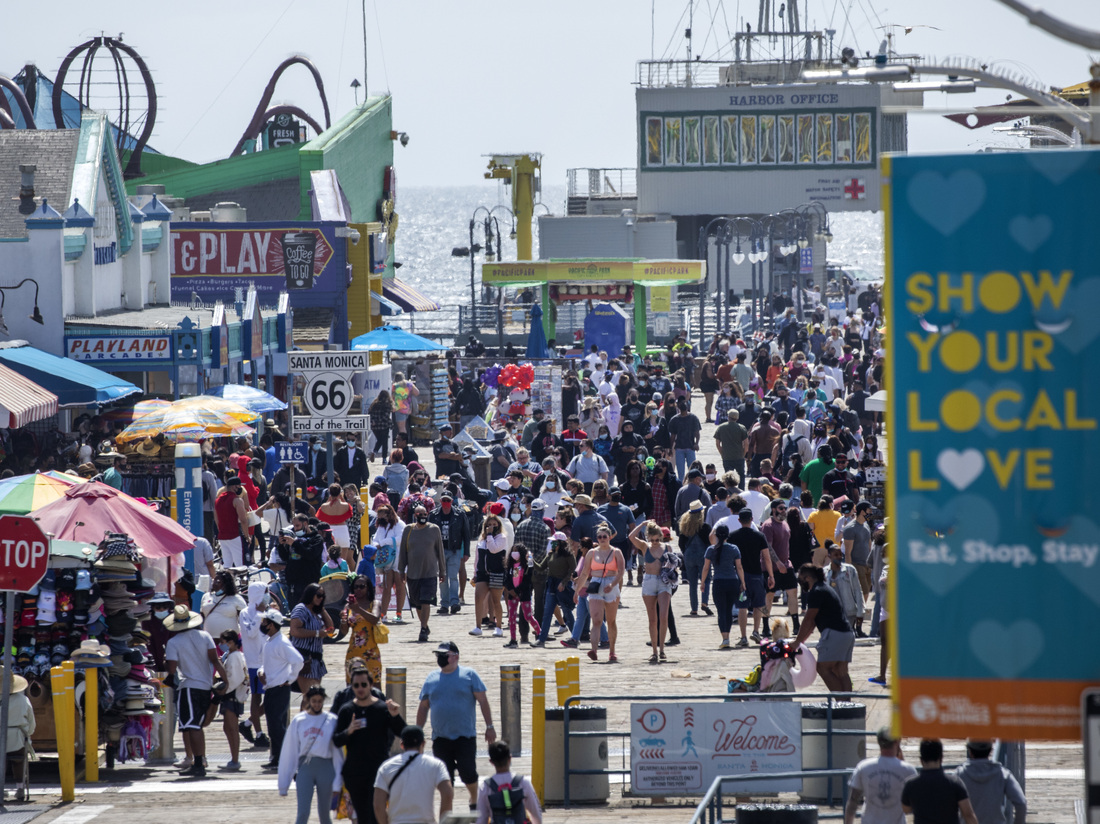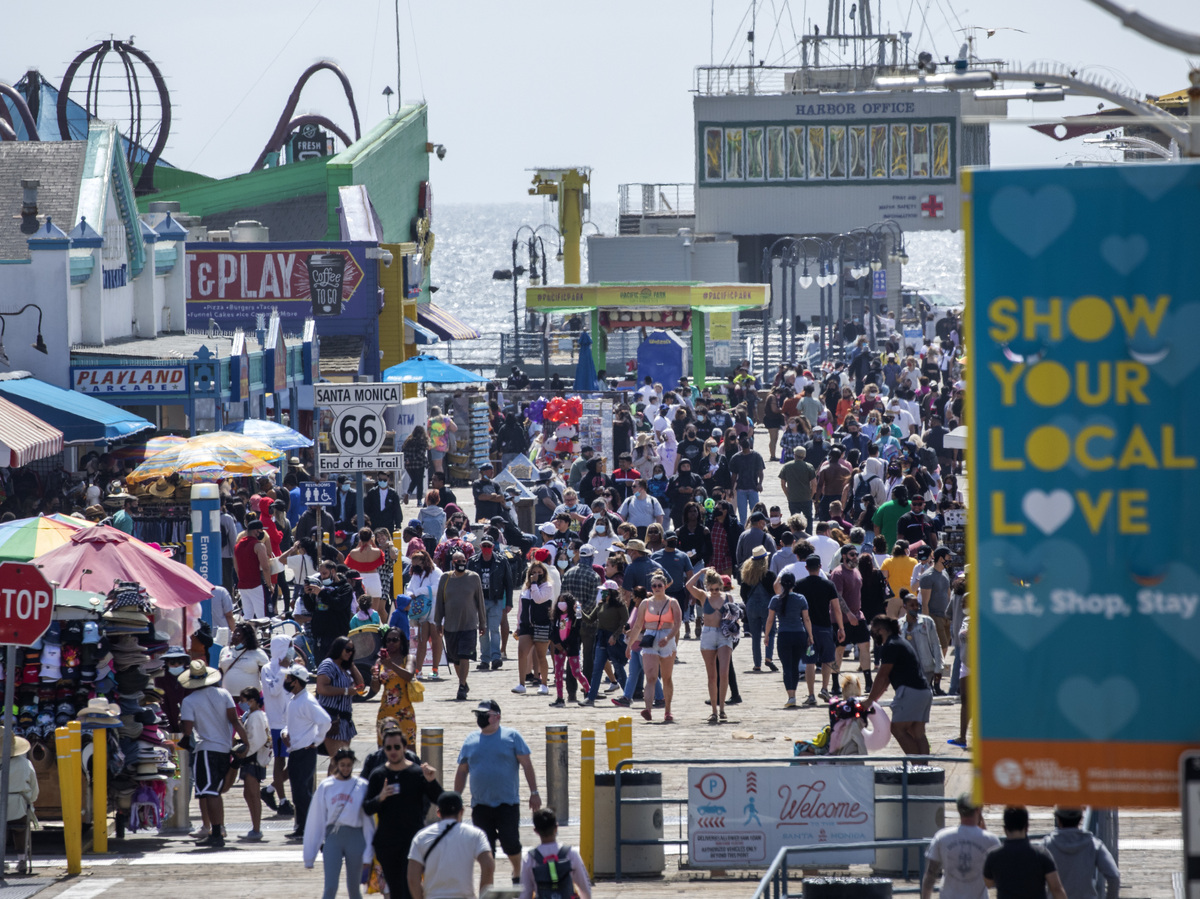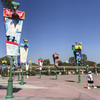[ad_1]

The Santa Monica Pier welcomed outdoor visitors on Monday as Los Angeles County entered the less restrictive orange tier. The following day, California Gov. Gavin Newsom announced a target statewide reopening date of June 15, provided certain public health criteria are met.
Myung J. Chun/Los Angeles Times via Getty Images.
hide caption
toggle caption
Myung J. Chun/Los Angeles Times via Getty Images.

The Santa Monica Pier welcomed outdoor visitors on Monday as Los Angeles County entered the less restrictive orange tier. The following day, California Gov. Gavin Newsom announced a target statewide reopening date of June 15, provided certain public health criteria are met.
Myung J. Chun/Los Angeles Times via Getty Images.
California could lift most statewide COVID-19 restrictions by June 15 if vaccine supply is sufficient and hospitalizations are low, Gov. Gavin Newsom announced on Tuesday.
Newsom said the state would lift its tiered system of risk and restriction known as the “Blueprint for a Safer Economy” contingent on those public health indicators, with its mask mandate and other “common-sense health measures” to remain in place.
“We are seeing bright light at the end of the tunnel,” Newsom said at a press conference. “And on June 15, all things being equal and we continue that good work, we’ll have moved beyond that blueprint and we’ll be opening up this economy at business as usual.”

He stressed that Californians should remain vigilant, especially given the relatively high case count of coronavirus variants recorded in the state. But he said it could soon be ready to take another step in its pandemic recovery, citing the lower number of hospitalizations and an expected increase in the availability of vaccines provided by the federal government.
The state crossed two important thresholds on the day of the announcement, according to Newsom: it has administered 20 million doses, and 4 million under its health equity metric.
He said officials are designing a system that will be able to administer some 5.8 million doses on a weekly basis, more than double the capacity of the approximately 2.5 million it received last week from the federal government. That number is expected to increase, with Newsom anticipating that more than 30 million doses will have been administered by the end of the month.
Eligibility for the vaccine is also increasing. People aged 50 and older became eligible for the vaccine on April 1, and will be joined by those 16 and up starting on April 15. The state has administered more than 7 million more doses than any other U.S. state, Newsom said.
“With more than 20 million vaccines administered across the state, it is time to turn the page on our tier system and begin looking to fully reopen California’s economy,” Newsom said. “We can now begin planning for our lives post-pandemic.”
The state will continue contact tracing and testing, and testing or vaccination verification requirements will remain in certain settings, he said in a release. He cautioned that the tentative plan is subject to vaccine supply and hospitalization rates, adding that officials will monitor those metrics “with the option to revisit” the target date if needed, though did not specify any numbers.

Dr. Mark Ghaly, California Health and Human Services secretary, said officials would pay close attention not just to the rate of hospitalizations but who exactly is being admitted and how many patients had already been vaccinated.
While the number of hospitalizations is low across the state — with 20 patients currently hospitalized with COVID-19 in San Francisco, for example — Ghaly said there is a race between vaccines and variants, and urged the public to take public health precautions like wearing a mask and signing up for the vaccine once eligible.
California’s public health department said the statewide 7-day positive rate was 1.6% as of Monday. As of the blueprint’s latest update on Tuesday, the majority of the state’s counties are in the “substantial” and “moderate” tiers of risk, with two classified as “widespread” and two as “minimal.”
In a memo outlining the transition, state public health officials said business sectors will be able to return to usual operations with “limited” public health restrictions.
Unless testing or vaccination status is verified for all attendees, conventions will be capped at 5,000 people until Oct. 1, and international convention attendees will only be allowed if fully vaccinated.

Schools and institutions of higher education should conduct full-time, in-person instruction in compliance with state and federal health guidelines, the memo added. Newsom said there is an expectation that students will return to in-person learning, but stopped short of calling it a requirement.
Californians and visitors will be subject to state and federal travel restrictions, which have also eased slightly in recent days though nonessential trips remain discouraged.
The state’s updated travel advisory as of April 1 no longer includes a recommendation that Californians not travel more than 120 miles from their place of residence, though it continues to discourage nonessential travel outside of the state.

The announcement comes as the governor faces political pressure from a recall effort that he dismissed last month as partisan and Republican. Critics of Newsom have taken issue with his handling of the pandemic and business restrictions, worsening housing and homelessness issues and high taxes, as CapRadio reports.
It’s one of several such efforts to have been filed since Newsom was reelected in 2018, and would be California’s first gubernatorial recall in nearly two decades. Organizers said they had collected enough signatures by the mid-March deadline to force a special election, and county election officials have until the end of the month to verify them.
[ad_2]
Source link